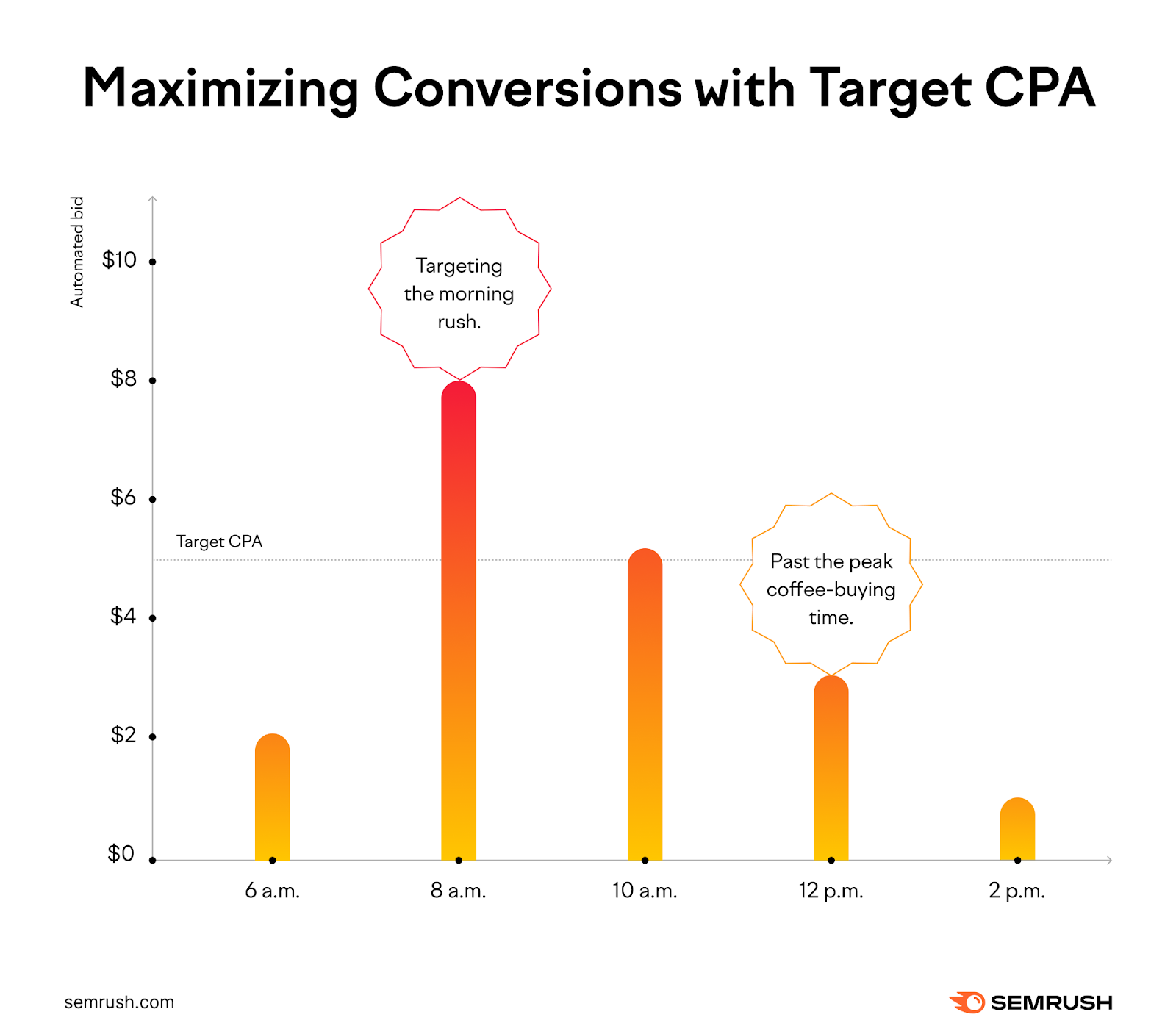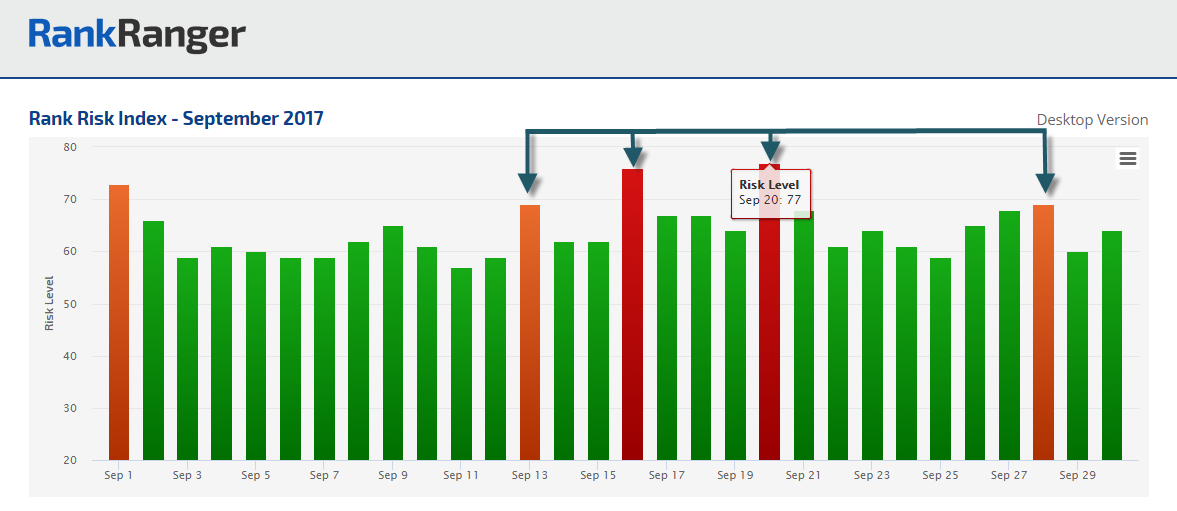
Posted by
Shay Harel
The September SERP was a doozy! The month was just downright interesting with Google throwing some real curve balls out there. Whether it was pushing an algorithm update or altering SERP feature trends, Google did not seem like its traditional self. On multiple occasions it seemed as if Google had shifted course a bit this past month. All I can tell you is, this one is going to be interesting.
A Series of One Day Rank Fluctuations – Is Google Running a New Algorithm Update Scheme?
This is downright peculiar in my mind, and I personally think there is more than meets the eye here. What am I talking about? I’m talking about a series of one day rank fluctuation spikes (but you knew that, you already read the H2). Between September 13th and 28th, the Rank Risk Index recorded four spikes in the rank fluctuations. The first spike saw a moderate risk level of 72. Three days later, there was a another more significant spike that reached a risk level of 74. Then on September 20th, just four days later, the index caught yet another spike that hit a risk level of 77. Finally (and as I humbly predicted), there was another increase in the fluctuations eight days later on the 28th. Now, this could all be coincidence. However, we all know Google and the chances of getting hit by lightning while winning the lottery are greater than this being a coincidence.

A pattern of one day algorithmic events pervades the September SERP during the second half of the month
To be perfectly honest with you, I would **** to the pull the data here and see if there is a pattern to the fluctuations. Wouldn’t it be something if all of these one day spikes related to the same sort of results or niche? Truth be told, pulling this data in light of the way Google rolled these updates out is extremely time consuming, which is what’s leading me to think that this is indeed a new strategic way to roll out an update. Meaning, that instead of rolling out one large update that throws everyone into a tizzy of some sort, Google is rolling out the same update, just slowly, bit by bit. Again, I’d have to really dig into our data to see if a pattern holds up, hopefully I’ll have the time and wherewithal in the upcoming days to do so.
The Search Box SERP Feature Sees a Premature Departure Globally
We were busy beavers here at Rank Ranger in September having dug up quite a few SERP feature data finds. First up, Google’s Sitelinks Search Box that had appeared within some organic results, vanished. On September the 27th, the feature was removed the from the SERP globally.
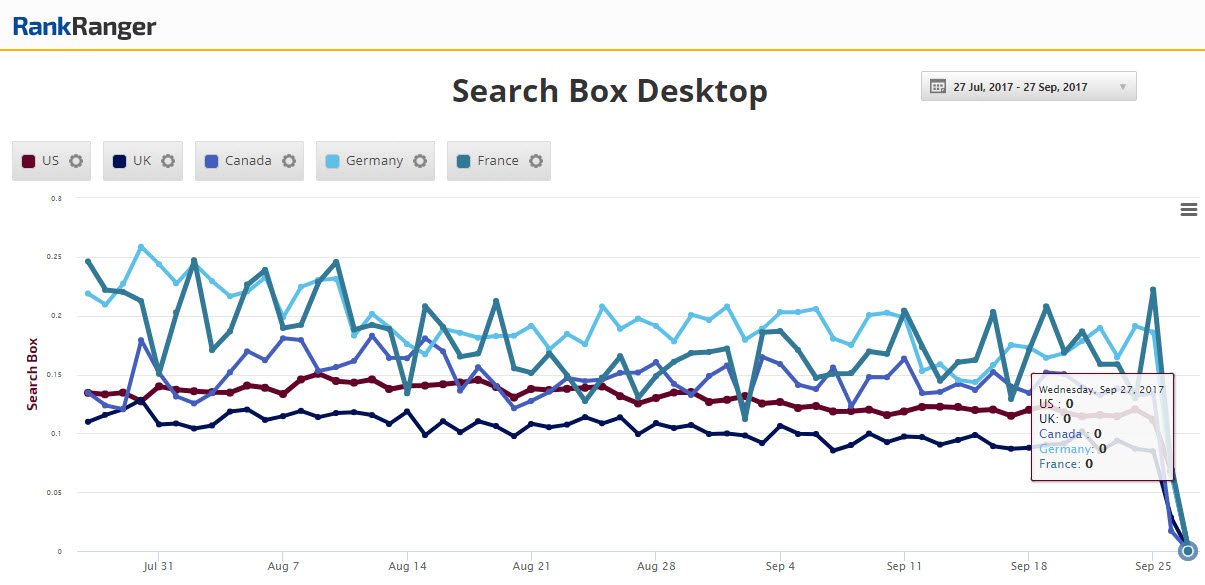
The Sitelinks Search Box was completely erased from the SERP globally on desktop
The feature’s disappearing act was not limited to desktop, but was equally applicable mobile as well:
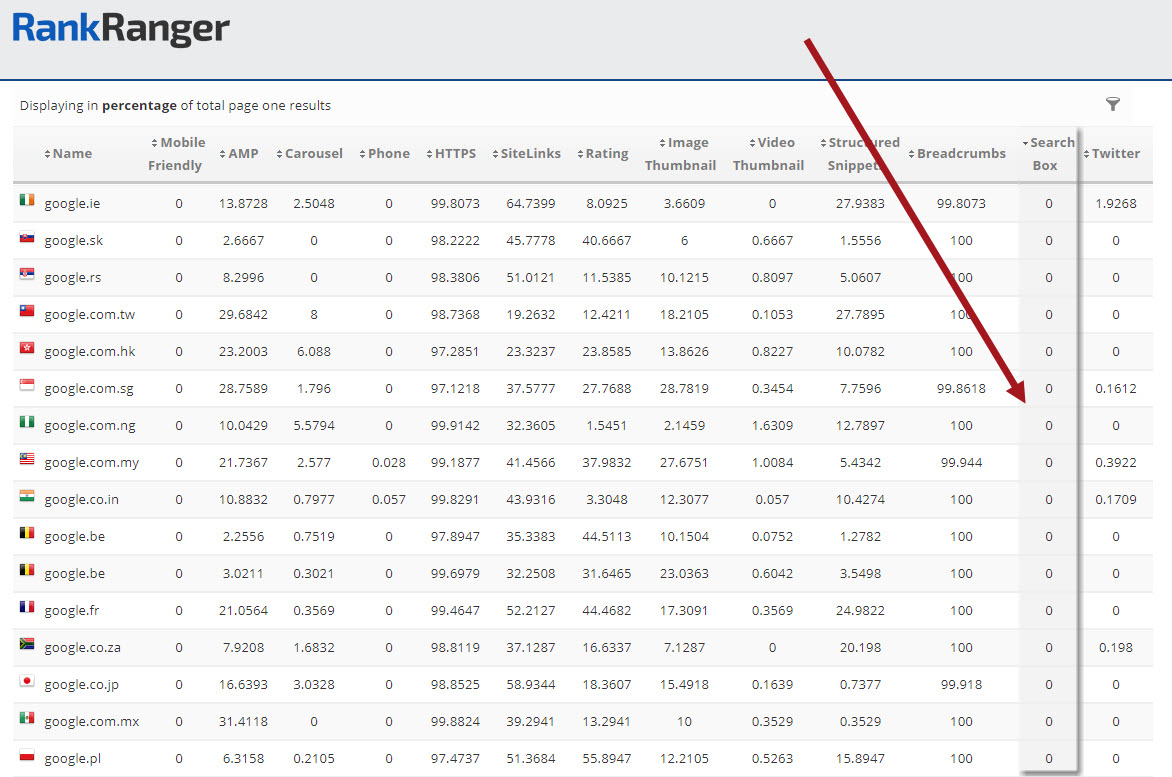
Like desktop, the Search Box feature was entirely absent from the mobile SERP across the globe
The Search Box feature never had a prolific place on the SERP, having generally appeared on a paltry .1% of Page One SERPs (US). However, there are practical implications that resulted from its removal. Dictionary site users were fond of the Search Box feature when looking up a word from the SERP (or so we’ve been told). Interestingly enough, the Search Box that appears within Google’s dictionary Box remained in place.
What was gone though was only to return. After announcing that the vanishing act was the result of a bug, Google had the Sitelinks Search Box up and running again by October the 3rd.
#SiteLinks Search Box is back! True to their word, Google has fixed the bug that erased the feature from the #SERP pic.twitter.com/KhbJVVZ0vN
— Rank Ranger (@RankRanger) October 3, 2017
Phone Call Organic Links & AMP Increase Across the Globe
Another under-performing SERP feature, the Organic Phone Call feature on mobile (at least that’s what I’m calling it, it doesn’t really have an official name, so feel free to come up with your own), saw an unexpected data shift (in what was another Rank Ranger find).
I say unexpected because the phone icon Google shows on mobile within organic results had (until now) only existed in the US and Canada. For the year and half (or so) that Google has been running the feature, there has not been much in the way of news. The feature has consistently shown on a few mobile SERPs. In fact, since its release, the only real news was back in May of 2016 when the feature started popping up on the Canadian mobile SERP. Since then, its data has been stable and Google has pretty much left the feature alone.
That’s why finding the feature pop up in the UK, Australia, Malaysia, and Italy was quite unexpected. On September 26th we found the feature appearing on an extremely limited number of Page One SERPs in the aforementioned markets.
We just caught Google testing its organic phone icon SERP feature in new markets! #SEO #SERP pic.twitter.com/8ZT4J7Jz1T
— Rank Ranger (@RankRanger) September 26, 2017
The entire proposition is just a bit strange. Why is Google all of the sudden paying attention to this “unfamiliar” SERP feature? Being that as it may, why is the search engine testing it in such an odd group of markets? Usually we see either a universal roll-out, or a geographically or linguistically associated group of countries gaining a feature simultaneously (i.e. the way Google has related to rolling out Featured Snippets in Europe). Here though, while the UK and Australia make logical sense, what’s the connection between those markets and Malaysia and Italy?
While the organic phone icon is now making headway on the international stage, our team also caught a more familiar mobile face making its own international splash. On September 28th we caught AMP spiking across the globe. While some countries saw smaller AMP gains, others underwent some pretty significant increases.
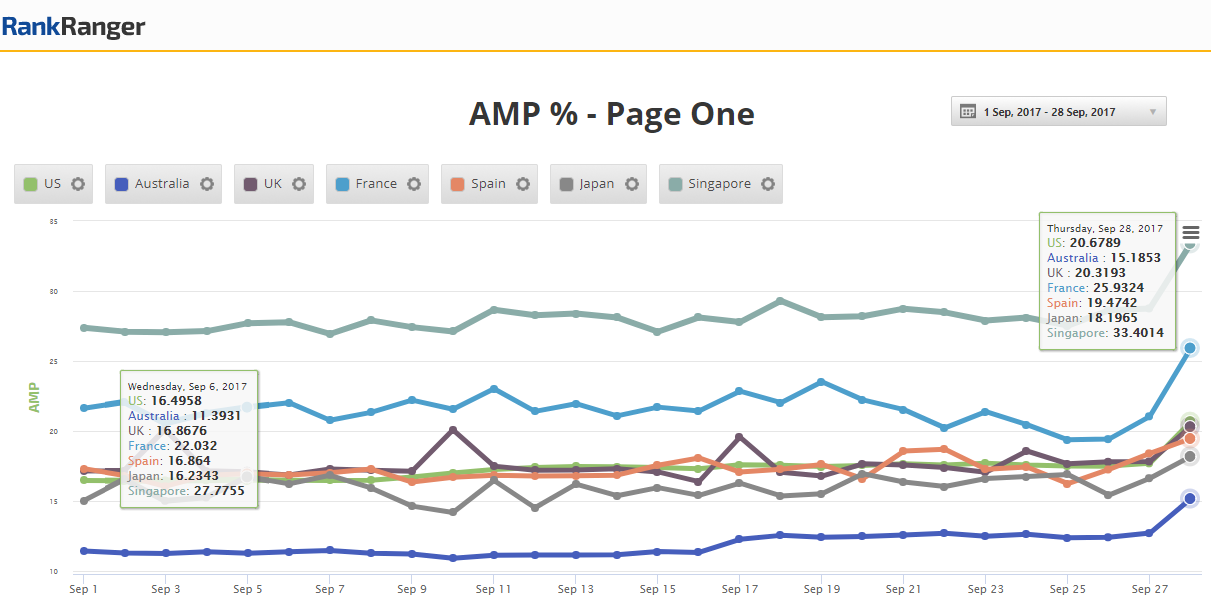
The percentage of Page One SERPs with at least one AMP result increases globally
Here are some of the more significant increases I found:
- US: 17%
- Australia: 19.5%
- UK: 14%
- France: 33.5%
- Spain: 19.5%
- Japan: 18%
- Singapore: 21.5%
What’s interesting here is that while the percentage of Page One mobile SERPs that contain at least one AMP result increased, the average number of AMP results on those pages did not!
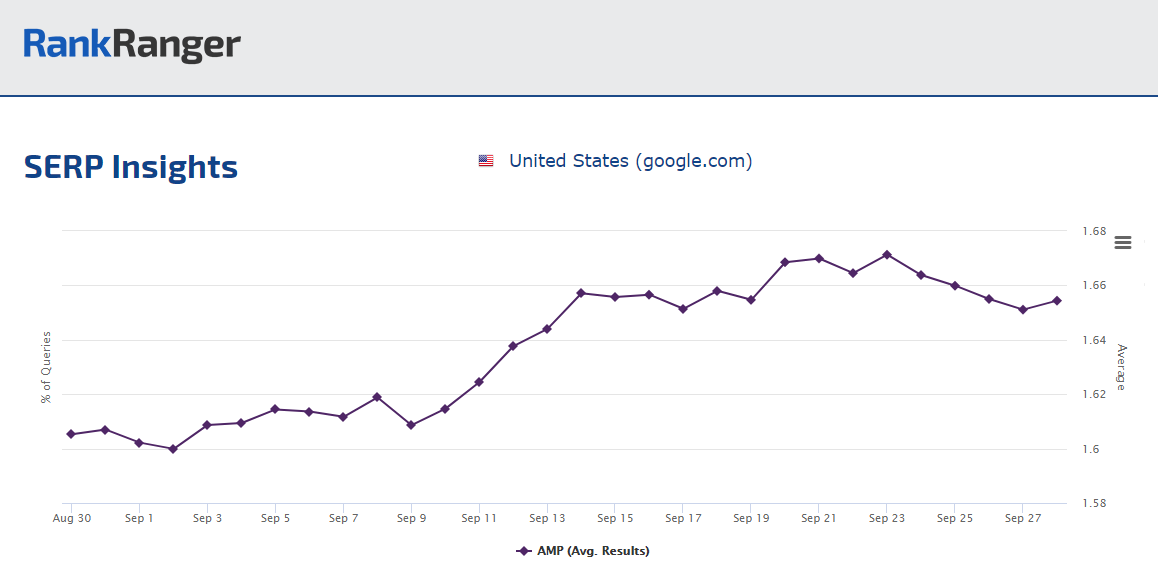
The average number of organic AMP results on Page One of the SERP remains static
Why is that significant? Well, combine this with the fact that AMP increased globally and you’ve all but eliminated the possibility that the AMP spike is the result of more sites going with the format. If that were the case, how odd is it that all of sites that have suddenly adopted AMP all appear on different Page One SERPs? What is therefore infinitely more likely is that Google decided to place AMP results on more Page Ones. Thus, AMP, as a “page factor” has increased in weight. I wonder then, with great curiosity, if people have suddenly seen their AMP pages move up the rankings and onto Page One?
September’s SERP Feature Changes
Google made a few interesting changes to its SERP features last month (shocking right?). Unusually (insert sarcasm here), most of these changes (and all of the ones to be discussed here) happened on mobile. As is consistent with the above, some of the moves Google made show that it has perhaps shifted course a bit.
AMP Enters Featured Snippets
We all know that Google shows the AMP icon within its mobile News Box and organic results. What’s new is that the search engine has started to show the lighting bolt icon within its mobile Featured Snippets. In early September Google began showing a site’s AMP status to the right of the URL within a Featured Snippet. Subsequently, the icon was relocated to the left of the URL later in the month. (I just want to know how that decision is made. Is there an official formal process over at Google with forms to fill out and whatnot, or did someone just stick a note in the suggestions box strongly advocating that the icon be moved to the left immediately?)
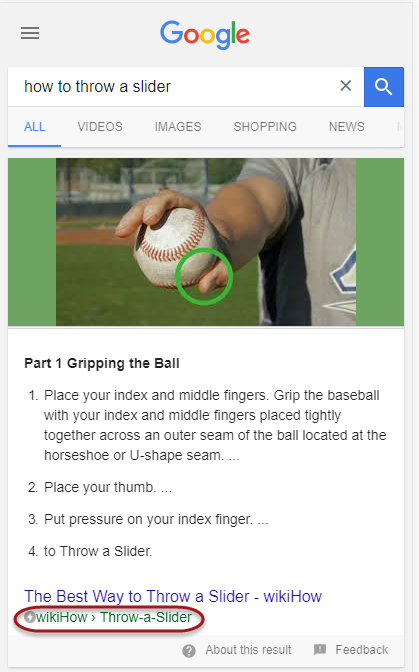
A Featured Snippet with the page’s AMP status displayed next to the URL
Regardless, the real question is does Google give AMP URLs priority in the Featured Snippets? Initial speculation appears that they do. This makes perfect sense to me, as it presents sites with another (and quite strong) incentive to “go AMP.”
Featured Snippets Related Topic Test
Perusing through search after search in an effort to maximize my SERP feature “geekiness” has its benefits, like finding all sorts of odd looking SERPs and SERP features. In early September I stumbled on this beauty:
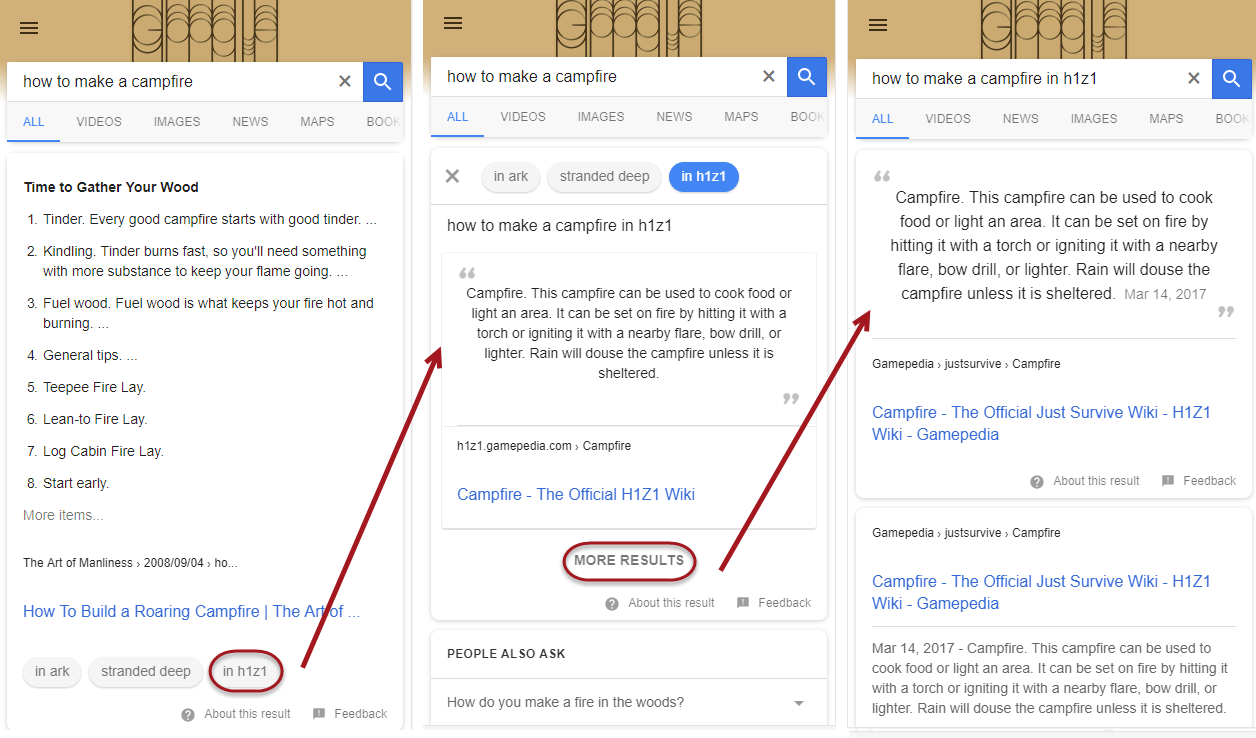
A Google test showing a series of related topics that bring up new Featured Snippets upon being engaged
What you see here is a mobile Featured Snippet on how to make a campfire. Everything looks copacetic until you get to the bottom of the box. You’ll notice three buttons there that seem to present “random words” (in ark, stranded deep, in h1z1).
Honestly, I was totally baffled by this element of the SERP feature. What in the world is h1z1? Is that some new and improved strain of swine flu? I’m obviously ****** myself here, since these are all popular video games. That’s right, Google is offering me insights as to how to make a campfire within these video games! Why? I have no idea. I haven’t played a video game since Duck Hunt was the latest craze, my kids are too little to play such games, and my wife is currently laughing at the notion that Google thinks she’s a gamer. That being said, this is what Google showed me. It offered me easy access to pull up a Featured Snippet that instructed me on how to build a campfire within these games.
What was nifty though was that upon tapping a related topic button, an overlay that was a new Featured Snippet appeared on the current SERP. Tapping on More Results at the bottom of the new Featured Snippet overlay brought me to the SERP related to the new Featured Snippet content. It’s an interesting test, provided Google is able to match a user and their actual interests.
Room Type Availability in Mobile Local Panels
As I mentioned, it was a big month for “Rank Ranger” finds. In the midst of researching Google’s in-SERP feature revenue streams (blog post forthcoming) I stumbled upon a “room type” carousel within the Local Panel:
Is this new @rustybrick ? Carousel of room type available on each site pic.twitter.com/IU8BSPm9ii
— Mordy Oberstein (@MordyOberstein) September 4, 2017
Appearing within the ad section of a hotel Local Panel, the carousel indicates what room types are available at a hotel on a per booking site basis. Meaning, per each booking site advertising within the panel, you can see what sort of room type you will be able to make a reservation for. The obvious upshot is that it enables you to see if the room you want is accessible via a particular booking site without having to enter information into multiple search fields on multiple booking sites.
Google Updates Mobile Knowledge Panels for Books and Movies
Yet another major upgrade to another category of mobile Knowledge Panel! This time, Google upgraded its already prolific mobile Knowledge Panels for movies and books. Previously, such panels operated via overlays. Meaning, expanding the panel or tapping on its content often brought up another Knowledge Panel that appeared “over” the original one (or at least had that visual effect).
The recent update however works on a system of tabs instead of the overlay that would previously appear upon expanding the panel. Two things are interesting here:
1) As opposed to the previous version, organic links are inserted into this format of the Knowledge Panel, though it’s a bit confusing to ascertain where the panel ends and the organic results begin. Perhaps that’s the point!
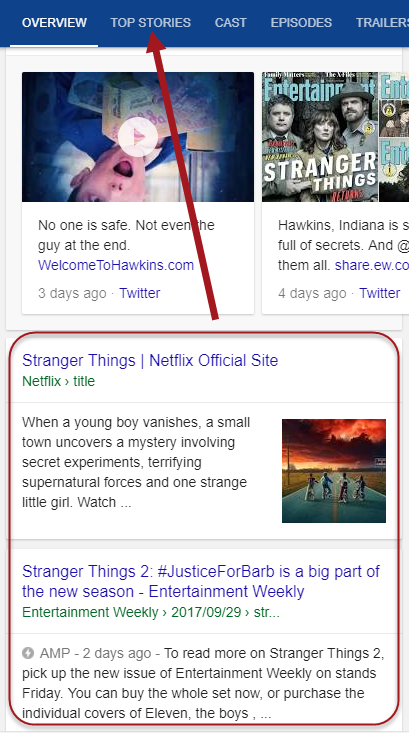
Though organic results are displayed, the Knowledge Panel’s header still appears
2) All of the content within the tabs can be accessed upon scrolling down within the initial Overview tab (hmmm).

The Top Stories tab within the new mobile movie/TV show Knowledge Panel format
What’s really fascinating is that within book panels you can see if an eBook is available at your local library.
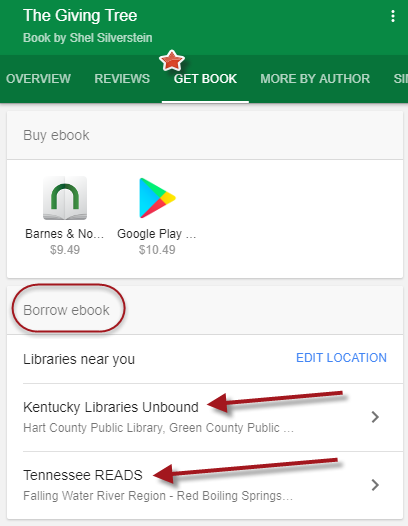
eBook availability at the local library as seen in the updated mobile Knowledge Panel for books
While these are some pretty extensive and interesting upgrades, I am quite curious about why Google decided to undertake such a drastic change. That is, what does Google get out all of this? Expect more from me on the topic, I have a theory as why Google did away with the “overlay” system. In either event, this is a another interesting “September shift” that can be considered “unexpected.”
Commerce on the September SERP
Wrapping up the news off the Google SERP for the month of September are two commerce related items, the first of which makes editing your Google My Business listing easier. Last month I mentioned that Google ran a test that allowed business owners to edit their Google My Business listing right on the SERP. In September, Google made that official. No longer a test, Google My Business listings can be updated and edited right on the SERP. What’s nice is that it makes updating a listing a bit more straightforward, especially for those who may not be “SEO experts.”
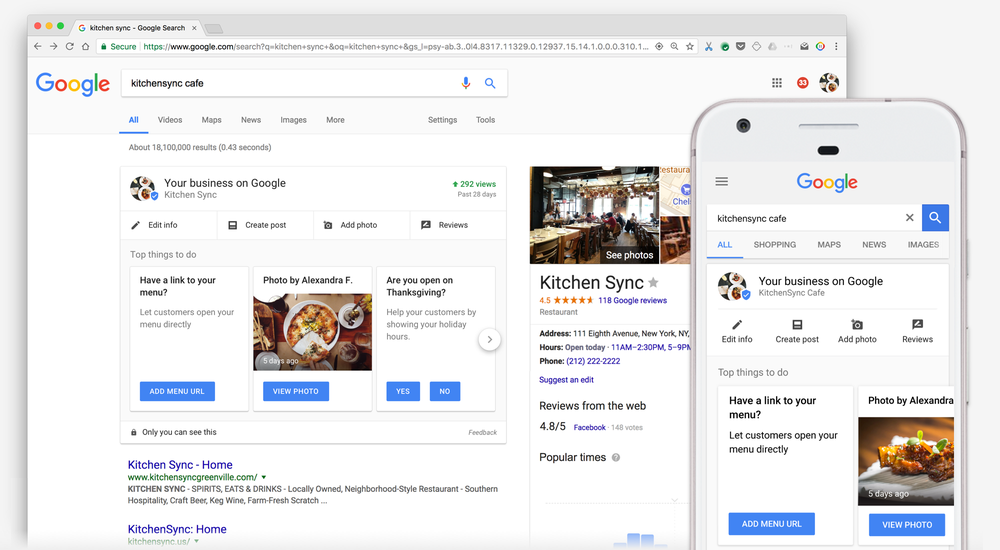
On the SERP Google My Business editing (Image Source: Google Blog)
Also new as of September, Google is limiting AdWords ads related to addiction treatment. The move comes as advertisers (obviously not all of them) were running ads in the hope of taking advantage of those in need of genuine help. The limitation appears to be extensive as some reports indicate a 40% reduction in certain cases. The details of the ad reduction aside, all I can say is kudos to you Google.
Thrown into Question by Google’s September SERP
Does Google have a new algorithm roll-out strategy? If so, will the details ever be revealed? Will the organic phone links take firm hold and fully roll-out globally? Does Google indeed prefer AMP pages for its Featured Snippets on mobile? What new feature will the mobile Knowledge Panel get next? All good questions and all in good time!
Also, are you seeing any changes to SERP features? Does it feel as if you’re seeing a certain feature more often or less often? Let me know, I would **** to hear from you!

